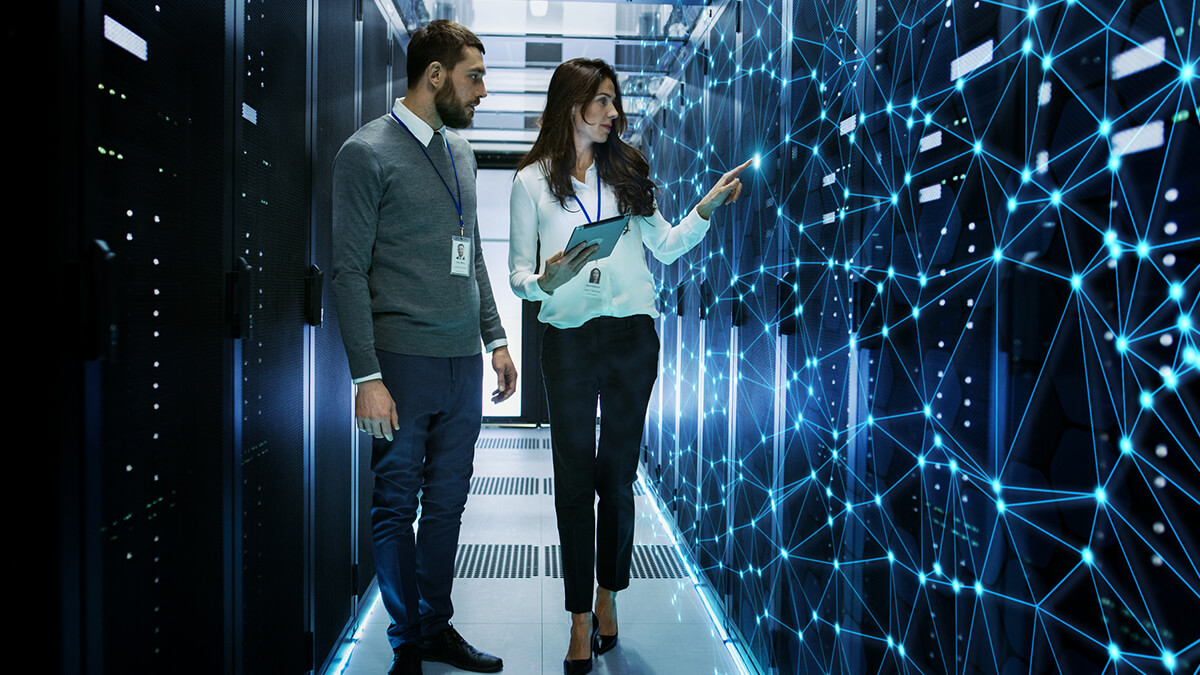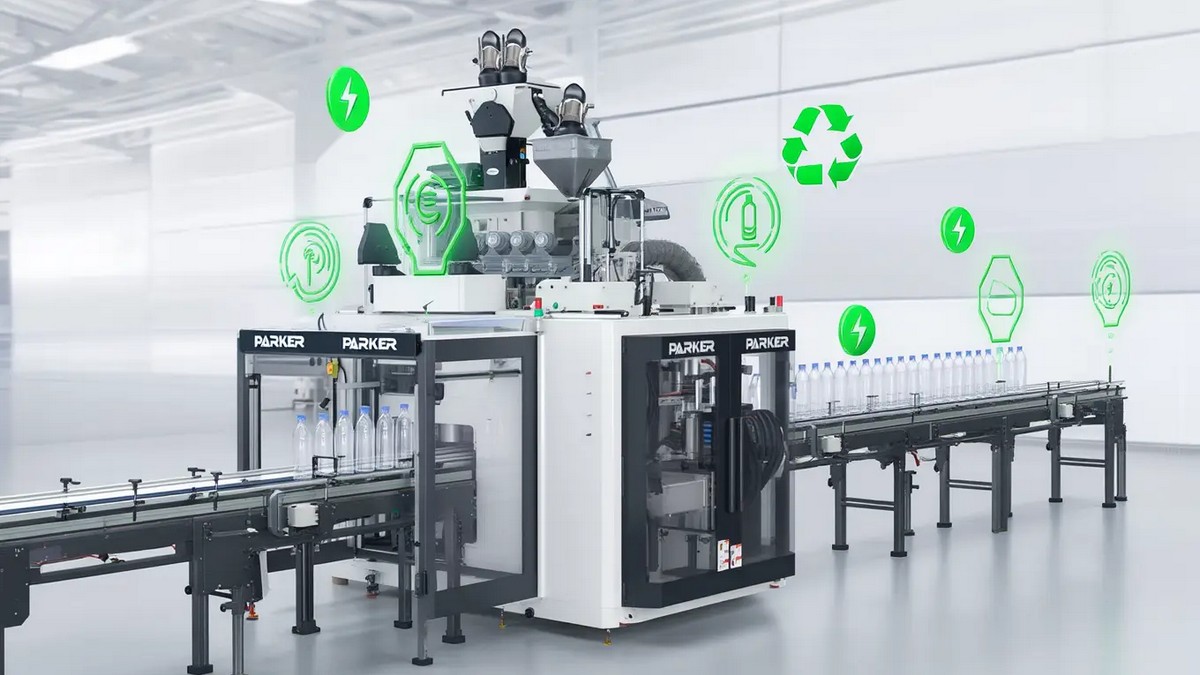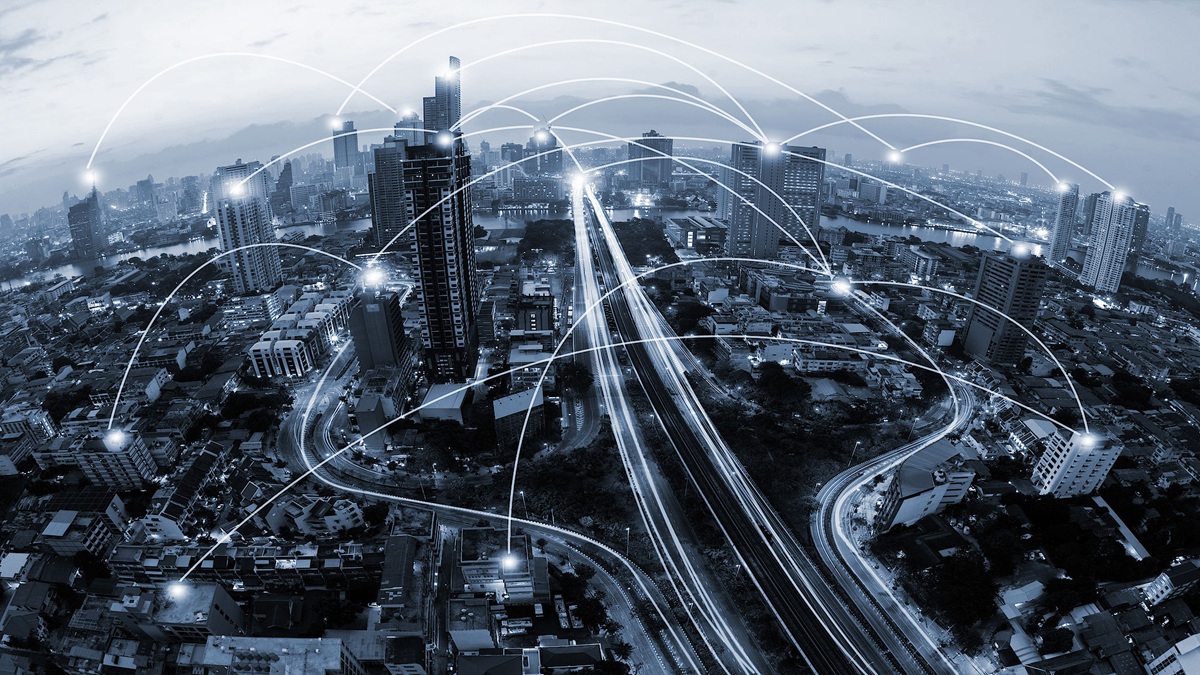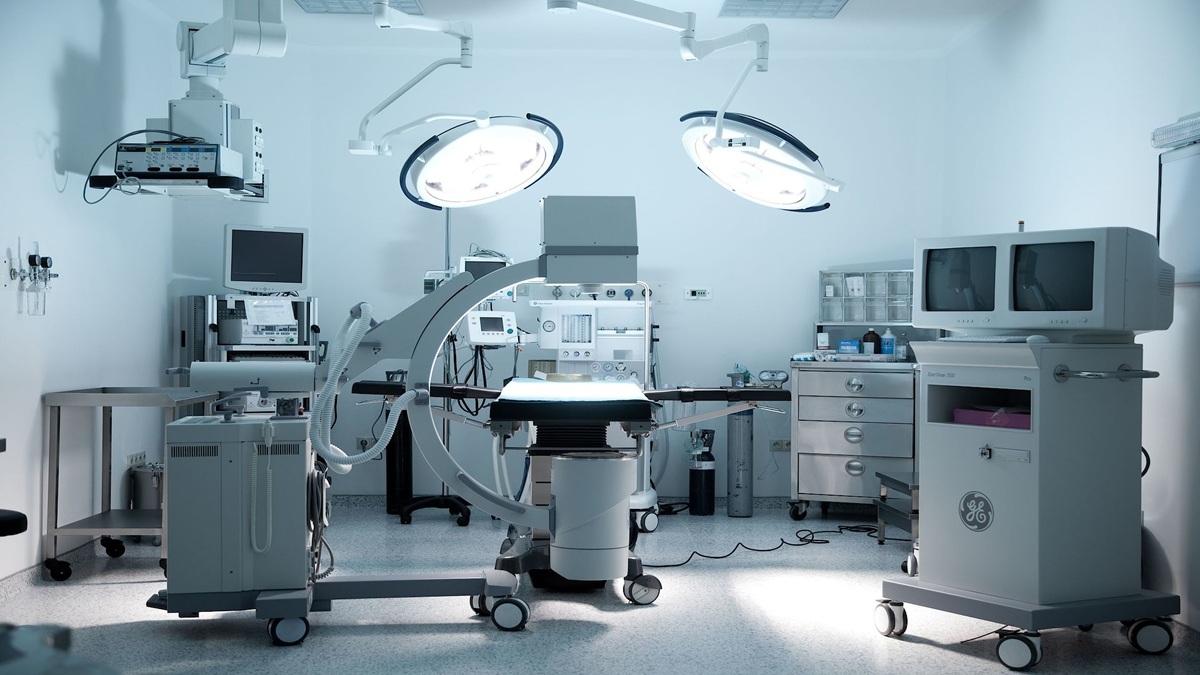Under the leading policy of "Industry 4.0" in Germany, the manufacturing industry followed the concept of "smart manufacturing", and introduced the digital application of machinery into the factory. Based on the information technology services that belong to the energy economy category, it was imported from cloud software. Optimize the process. This kind of service platform is built on a modular structure that can be flexibly combined and uses AI to assist in providing strategic recommendations to achieve the energy-saving benefits of IoT machines.
Germany promotes Industry 4.0 and launches smart manufacturing
This application has been gradually implemented in the machine tool industry, and this trend can be observed at this EMO Hannover Machine Tool Show in Germany. The hotspot of the exhibition in 2019 is focused on smart factories. The knowledge service products and solutions under this concept are presenting the application of the concept of Industry 4.0 in the fields of machines, parts, control, measurement systems, and logistics applications. Among them, LIVE 5G is the world's first test area to demonstrate the smart manufacturing of the 5G environment. It is implemented in industrial applications with ultra-fast mobile communications and realizes the huge potential of 5G in smart manufacturing processes.
The chairman of the German Machine Tool Manufacturing Association (VDW) explained that smart technology is the key to improving productivity, quality, and flexibility. These are the typical goals of production technology towards new development and further development. Digitalization and smart factory networks also promote new functions such as process monitoring, or predictive maintenance, which complement complementary self-learning machines based on smart data and data analysis. These have laid the foundation for new business models such as the platform economy, enabling customers and suppliers to achieve higher levels of efficiency.
To achieve the information consists of the Internet of Things interface and accelerate the integration process of the smart factory, VDW proposes UMATI--universal machine tool interface, hoping to create an internationally credible communication standard and specification through this free universal platform to jointly promote UMATI There are also large German manufacturers such as DMG Mori and Trumpf. Also, Cecimo, including China, Japan, Taiwan, and the European Machine Tool Association, participated.
UMATI defines the operation logic of machinery and equipment through a modular universal interface, which is translated into a readable data description for users to quickly understand. In this way, the communication distance between all networked devices and between machines and people is further reduced.
China has profound international competitiveness and complete industrial settlement in the supply of machine tools and components. The Taiwan version of the information model standard is jointly promoted by the Institute of Mechanical Engineering, the Metal Center, and the Information Policy Society of the Industrial Technology Research Institute under the framework of the "Smart Manufacturing Network Data Value Added Alliance". In 2011, at the Hanover Trade Fair, Industry 4.0 (the fourth industrial revolution) was published. The course of the human industrial revolution was the first industrial revolution. Due to the discovery of the power of the steam engine, the second was electric power and the third was a computer. The four industrial revolutions are digitalization / artificial intelligence. Currently, digitalization / artificial intelligence has an increasing influence on global industrial and economic development.
With the advent of unmanned shops, self-driving cars, unmanned aircraft, unmanned kitchens, robots, and products related to artificial intelligence, countries are urged to develop products and industries related to digitalization and artificial intelligence. People gradually feel that once the above technology After the development is mature, the Internet, digitalization, and artificial intelligence will dominate the future economic development and daily life of mankind.
To promote the fourth industrial revolution, the German Federal Ministry of Economy announced the Industry 4.0 Guide in April 2017. The guide is divided into five major aspects: information, guidance, demonstration and certification, testing, implementation, and cooperation. Publish publications, films and organize various activities to promote Industry 4.0 to the industry and the public; in the guidance section, provide execution cases, information, display, and test laboratories; demonstration and certification fields, seminars and training camps, Laboratory use commentary, creative plan testing; on the test side, there are creative plan development, experts and consultants to assist guidance and provide financial assistance, etc. .; in implementation and cooperation, etc., strengthen the establishment of inter-industry Internet and promote International cooperation plan, etc.
To promote the Industry 4.0 project, the German government established the Industry 4.0 platform (Plattform Industrie 4.0), which is composed of experts in the fields of industrial policy, economics, science and technology, associations, and trade unions, and jointly promotes Industry 4.0. The Industry 4.0 platform builds tools such as information and guidance through online maps (Online-Landkarte) and Industry 4.0 guides (Industrie 4.0-Kompass) to reduce the burden of introducing Industrie 4.0 (especially small and medium-sized enterprises). In the implementation of Industry 4.0, Germany introduced Referenzarchitekturmodell Industrie 4.0, RAMI 4.0 (Reference Architecture Model Industry 4.0), so that the industry can refer to and obtain performance. Besides, the German Industry 4.0 platform set up the "Standardization Council Industrie 4.0" in 2016, sponsored by the German Information Economy Telecommunications and New Media (Bitkom) Association, the German Industrial Standards (DIN) Association, the German Electronic Technology Standards (DKE) Committee, German Mechanical Equipment (VDMA) Association, and German Electronics Industry (ZVEI) Association.
The German Industry 4.0 platform provides an online map with about 300 companies implementing Industry 4.0 cases. The Industry 4.0 platform is networked with major partners. For example, the German BMW Motors Corporation established the SME 4.0 Center (Mittelstand 4.0-Kompetenzzentren). Industrie 4.0 Internet Lab (Labs Network Industrie 4.0) or Industrie 4.0 Research Project Information Office (Forschungsprojekt Informationsstelle Industrie 4.0) and other units, to help the industry to find a suitable test center, and in Berlin, Hamburg, Stuttgart, Leibniz University, Augsburg, Chemnitz, Darmstadt, Dortmund, Ilmenau and Kaiserslautern, and other places established SME 4.0 centers. Besides, the German Industry 4.0 platform established an online library (Online-Bibliothek Industrie 4.0 :) to help companies and those who are willing to understand and enter the era of Industry 4.0.
The prerequisite for the success of Industry 4.0 is the company’s trust in the security of the virtual world. Mechanical equipment operators must understand the requirements of security for the Industrial Internet to achieve results. At the 2017 Hanover Industrial Exhibition, the German Industry 4.0 platform and the Industrial Internet Consortium (IIC) The organization exhibited a demonstration device (Demonstrator) jointly developed by both parties, which proved that secure communication was feasible.
Germany cooperates internationally on the Industry 4.0 platform, such as the Global Industrial Internet Consortium, Made in China 2025, Alliance Industrie du Futur, and the Japanese Robot Revolution Program ( Robot Revolution Initiative), Italy ’s National Industry 4.0 (Piano Nazionale Industria 4.0), the Czech National Industry 4.0 Initiative (Narodni iniciativa Prumysl 4.0) and the European Union ’s Digitizing European Industry.
Introduction of Industry 4.0 Production Mode
In the process of Industry 4.0, production and information and communication technology are combined. According to the individual requirements of customers, they can produce their special soles and sports shoes that are designed in preference, or order personalized furniture. Industry 4.0 can be carried out at a mass-production price. Individualized product manufacturing, Industry 4.0 determines the entire product life cycle, from conception, development, production, use, maintenance to final recycling. According to the data released by the German Federal Ministry of Economics, by 2020, Germany will invest 40 billion euros in Industry 4.0 each year, and 20% of German automakers have introduced the Industry 4.0 production model. Through Industry 4.0, an additional 153 billion euros of economic benefits will be created for Germany.
Case introduction: German self-driving car
- Unmanned small bus
Because of the ubiquitous influence of the Internet, digitalization, and artificial intelligence, there are a total of 10 places in Europe to test driverless buses, 4 of which are located in Germany (3 test sites in Berlin and 1 in Bad Birnbach, Bavaria). In 2017, the German government began to test driverless minibusses at four locations in Berlin, Germany, and Bad Birnbach, Bavaria. It is expected to reach a fully driverless car on the road in 2020. Berlin ’s Charité Hospital Mitte district, three test sites including the Virchow-Klinikum campus of Charité Hospital and the EUREF Technology Park.
The driverless bus in Berlin has 12 seats, and there are still technical experts on board to solve the emergency and eliminate the breakdown of the driverless car at any time. The driverless bus is currently driving in the courtyard (or park) On general roads, rather than planning special or exclusive (isolated) road environments, the maximum speed is 12 kilometers (or 15 kilometers) per hour, free for people to ride (workers, business contacts, patients, etc.).
According to the information of the test participants, the driverless bus has been tested in Berlin for more than a year, and there have never been any traffic accidents, such as accidentally hitting pedestrians on the road, nor hitting ordinary vehicles driving on the road or parking on the road. success. The industry pointed out that since the test, the city of Berlin has never experienced heavy snowfall. Therefore, the driverless small bus still has to learn a snowfield driving test. In terms of passenger opinions, although the passengers are satisfied with the test driving of the small driverless bus, it is recommended to speed up driving in the future to meet the actual needs.
- The driverless connected truck
On June 25, 2018, the German government implemented the world's first unmanned connected truck test on Munich's No. 9 highway (A9) from Munich to Nuremberg. Two vehicles with a distance of 15 meters (general truck distance is 50 meters) driving on the highway, the front truck is driven by people, and the rear car is controlled by the computer immediately after the front car. The distance between the two cars is reduced to reduce wind resistance. Therefore, every 100 kilometers will save 10% Fuel costs. According to reports, the two connected trucks only need 40 meters on the highway, and the average trucks need 90 meters, which saves road use.
- Business opportunities for driverless vehicles
According to the information released by the German Federal Ministry of Transport, driverless vehicles must be equipped with the following key spare parts before they can drive on the road, and they can be viewed from the clock on the right side of the above picture. Vehicle information and communication system (Technik Zur car2x-Kommunikation), Traffic sign recognition system (Verkehrszeichenerkennung), Collision sensor (Crash-Sensoren), Automatic parking search and parking system (Schlüsselparken), Stauassistent, Mono-und Stereokamera, Radar, Ultrasonic sensor (Ultraschallensensoren), Optical radar system (Lidar- Licht detection and ranging), infrared camera (Infrarot-Kamera), satellite receiver (Satelletenempfänger).
The internal structure of driverless vehicles is different from that of ordinary vehicles. Most of them are electronic products such as optics, sensors, cameras, satellite systems, communication systems, and the Internet. Taiwan is one of the major suppliers in the world. Our company can establish supply chains with foreign companies. Cooperation to develop a new blue ocean market.







.jpg)
.jpg)
.jpg)


.jpg)

點-m-90454917_m.jpg)